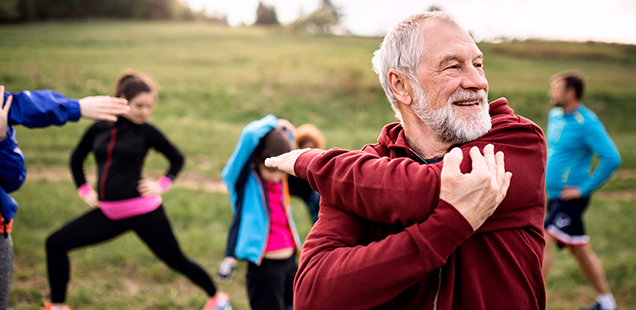
In my nearly 20 years of clinical practice there are a few things I feel comfortable discussing as an “expert witness” per se, though it is unlikely you will ever see this published in a peer reviewed journal. One of them surrounds the phenomenon of the aging athlete that is always injured and chalks it up to simply getting older.
To paint a picture, the majority of my patient population is an athlete on some level. Some are high school lacrosse players, others competitive masters runners, weekend warriors on the basketball court or recreational soccer stars. All have their well-defined place within the athletic sphere in which they reside. The problem is, with the exception of the high school student, very few of my athletes take their sports as seriously off the field as they do on the field. What do I mean by this?
To give an example, my own soccer team, (co-ed over 25 league with the average age somewhere in the mid-thirties). Each game we travel a good 45-60 minutes to the field to play. Many of us then hop out of our cars and within 10 mins are racing up and down the field in the heat of competition in a contact sport with a very high rate of injury. Prior to the game we were probably working, taking care of our children, grocery shopping, performing housework etc. What were we NOT doing? Preparing for the match.
In fact, upon observation, many of my teammates and patient-athletes do very little to prepare for their athletic endeavors not only right before the event but not in the days leading up to it either. Time and time again I find myself talking with people about developing a well-rounded program. One that includes activities similar to the competitive environment that they find themselves on Sunday afternoon. What happens more often is that people are simply too busy and their sport becomes their exercise. Folks don’t run to gain fitness for soccer, they don’t perform tailored strength training to build stability and endurance for running and they definitely don’t arrive early to their event to engage in a proper warm-up.
Jump back to my high school athletes. On average they will practice 2 hours a day 4 days per week with 2 game days and an off day. At practice they will go through a progressive warm-up, ball skills work, running set-plays, conditioning/agility, and then likely some form of scrimmage or more competitive drills. The amount of time building up to the competition is significantly greater than the time competing. With the adult athlete usually the competition IS the warm-up, the training and practice all mixed into one.
So why does this matter? You have heard the saying failure to plan is planning to fail. Well in the world of sports medicine and rehabilitation I would say failure to prepare is preparing to be side-lined. This is especially true for the over 30 athlete. With so many of us crunched for time yet aspiring to re-live our glory days through our sports it is no wonder that many people are walking around perpetually banged up from the same sports they profess to love. It is simply unrealistic to think that a 45 y/o father of 3 can work a desk job 60 hours a week then on Friday at 4:45am jump on the ice and play hockey like he did 20 years prior without getting hurt. Is it really his age, or his lack of preparation?
Yes, when we were 15 our bodies would let us get away with some things than now they simply will not. As we get older our tissue is less supple, less pliable, and we lose muscle mass more rapidly. Not to mention how we are likely stressed out, sleep deprived and running on coffee and snack mix. It’s no wonder that every guy on the softball team has a resume of injuries they are complaining about, rubbing liniments on or adorning with some self-prescribed taping technique.
So here’s some free advice. Treat yourself to 10 extra minutes before your run, soccer game, or tennis match. Grab a foam roller and perform some self soft-tissue mobilization to get the muscles prepared to be utilized in the fashion that you need them to. Run through a dynamic warm-up with activities that mimic those found within your sport of choice (see link below). If you are going to be sprinting at 100% during the game, do it during warm-up. If you need to jump, do that. Build time into your week investing in fitness related activities that will complement your sports. There are tons of great resources out there to guide you down this path. (And of course at Fitzgerald Physical Therapy we would be happy to help you with this.)
Simply stated the best way to stay out of my office is to spent time working on yourself before you get injured. The program and warm-up that will best meet your needs is the one that you will be compliant with on a regular basis. It doesn’t have to be fancy, time consuming or all-inclusive. It just needs to get done.
Here’s a link to a dynamic warm-up routine!


